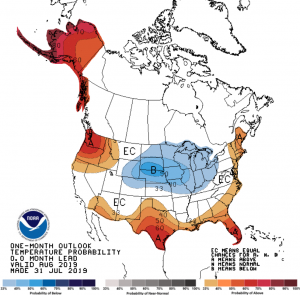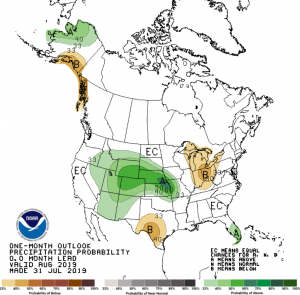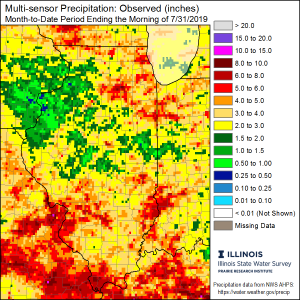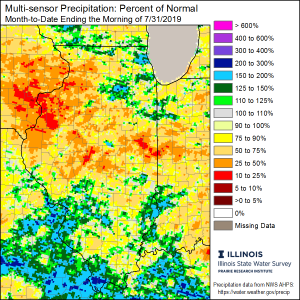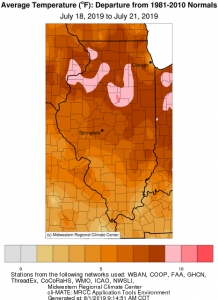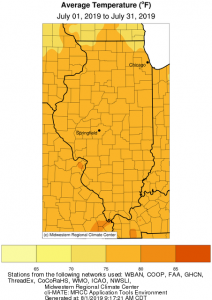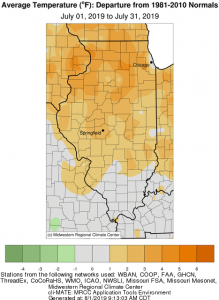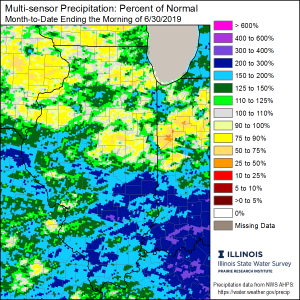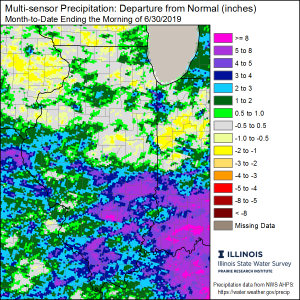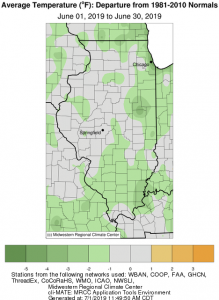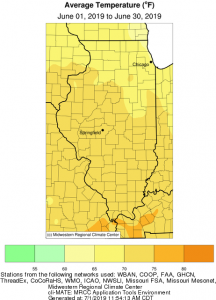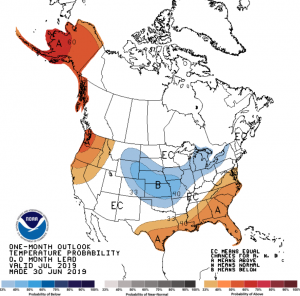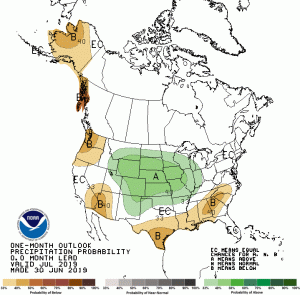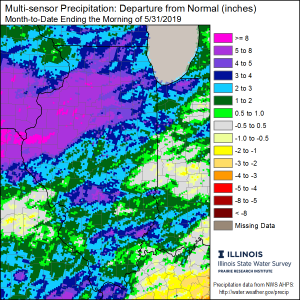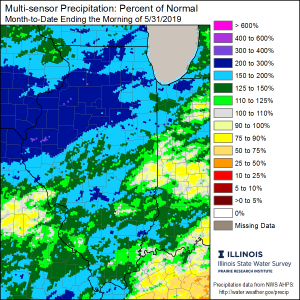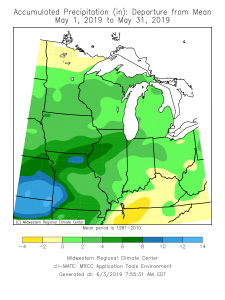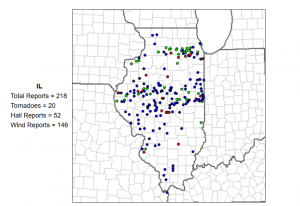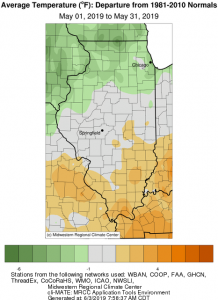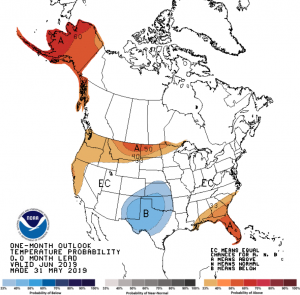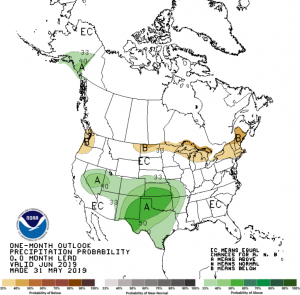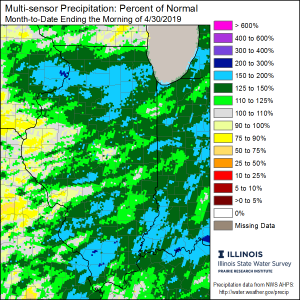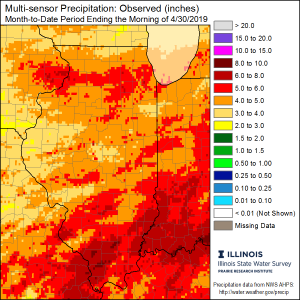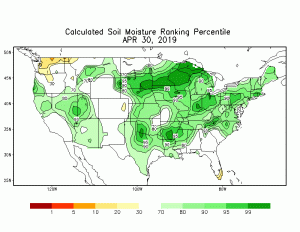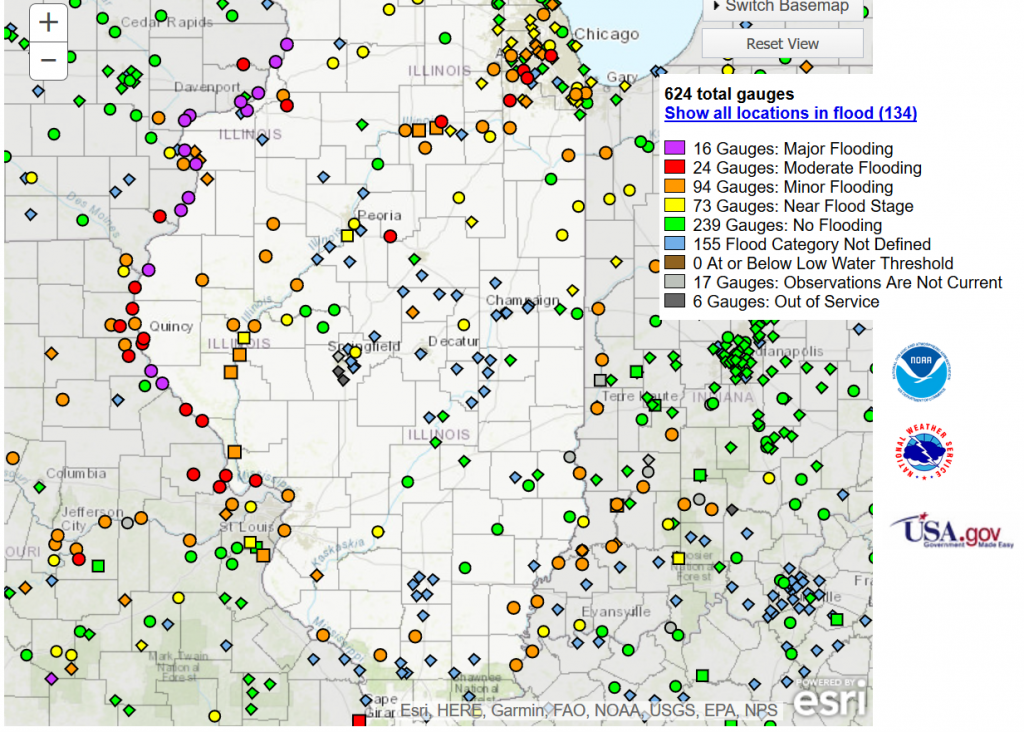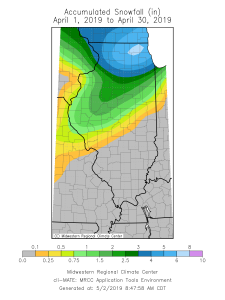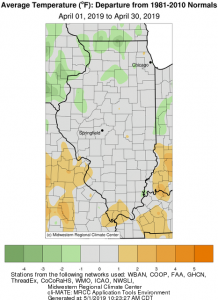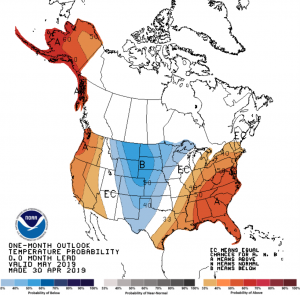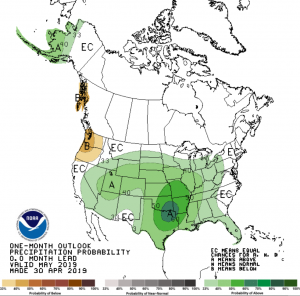July 2019 signaled the end of a persistent and historic stretch of abnormally wet conditions across Illinois, along with several notable periods of significantly above average temperatures.
Preliminary data suggest that July 2019 concluded drier than average, with temperatures above the long-term average. The preliminary average statewide July temperature was 77.3°F, which is 1.9°F above the long-term average. The preliminary average statewide precipitation was 3.23 inches, which is 0.85 inches below the long-term average.
Data are provisional and may change slightly over time
Precipitation
After seven consecutive months of above average statewide precipitation, July 2019 marked the end of the historic wet streak with below average statewide precipitation for the first time since November 2018. Despite the overall below average designation, July precipitation across Illinois was not evenly distributed.
Many in southern and northeastern portions of the state experienced near to above average precipitation totals in July, with a station near Highland (Madison County) reporting the highest monthly rainfall total of 9.02 inches. In contrast, large regions of western and central Illinois saw below average rainfall. In fact, multiple localities near the Quad Cities and along the Mississippi River, as well as smaller regions in east-central Illinois received only 10 to 25% of average monthly precipitation (see maps below).
Dating back to June 1, these same regions have reported precipitation departures of around 2 to 4+ inches below the long-term average. This extended stretch of dry conditions prompted the August 1 map from the U.S Drought Monitor (using data through July 30) to continue to highlight areas of abnormally dry conditions across the western and central portions of the state.
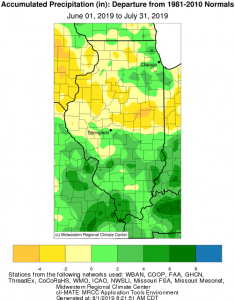
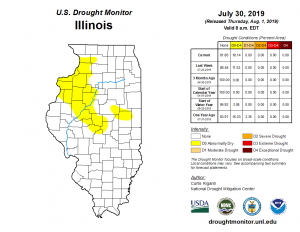
Interactive July 2019 Climate Station Precipitation Map
Temperature
Despite an overall seasonable and pleasant ending, the first weeks of July brought several extended periods of heat and humidity to Illinois. Most notable was the heat wave that impacted the region from July 18 through July 21, in which every county in Illinois was under an Excessive Heat Warning at some point during the weekend. Throughout this event, daily maximum station temperatures soared into the 90s, with dew points in the mid- to upper 70s. This resulted in heat indices over 100 for many and approached 110 or higher in some localities. Daily temperature departures of 8 to 10+ degrees above average were common across the northern half of the state (see map below).
Overnight low temperatures during this event did not bring much, if any, relief from the heat. With a daily minimum temperature of only 80 degrees on July 19, Rockford (Winnebago County) set a new all-time record-high minimum temperature. Records for Rockford extend back to 1905.
Looking at July as a whole, the average station temperatures varied from the mid-70s to the low 80s, and monthly temperature departures of 1 to 4 degrees above the long-term average were common for the northern two-thirds of Illinois (see maps below). The highest temperature reading in the state of 98 degrees occurred at two stations, Flora (Clay County) on July 11, and Palestine (Crawford County) on July 21. The lowest minimum temperature of 51 degrees also occurred at two stations, one near Champaign (Champaign County) on July 23, and at a station near Paxton (Ford County) on July 25.
Interactive July 2019 Climate Station Temperature Map
August 2019 Outlook
For the remainder of August, the monthly outlook from the Climate Prediction Center (CPC) issued on July 31 favors probabilities for below average temperatures across Illinois and most of the upper Midwest. The outlook also favors near equal chances for below, near, or above average precipitation.
